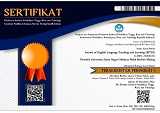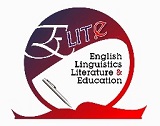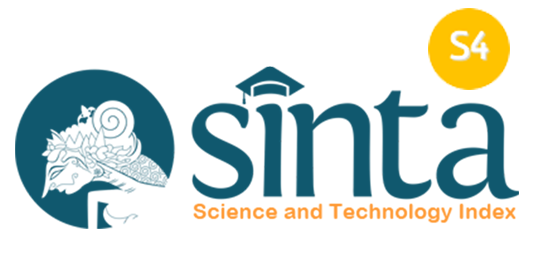Investigating technology integration in English language instruction from 2018 to 2024: A systematic literature review
Abstract
Keywords
Full Text:
PDFReferences
Al-Kadi, A. (2018). A review of technology integration in ELT: From CALL to MALL a review of technology integration in ELT: From CALL to MALL. Language teaching and educational research. In Language Teaching and Educational Research (Vol. 1, Issue 1). http://dergipark.gov.tr/later
Almalki, A. (2020). Integration of technology among Saudi EFL teachers. English Language Teaching, 13(8), 160. https://doi.org/10.5539/elt.v13n8p160
American Council on the Teaching of Foreign Languages. (2018). Role of technology in language learning. http://www.actfl.org/sites/default/files/pdfs/
Ammade, S., Mahmud, M., Jabu, B., & Tahmir, S. (2018). Integrating technology in English language teaching: Global experiences and lessons for Indonesia. International Journal of English Linguistics, 8(6), 107. https://doi.org/10.5539/ijel.v8n6p107
Ayşenur Ağaoğlu, & Bünyamin Bavlı. (2023). Teaching English as a foreign language: Technology integration in testing and assessment. International Journal of Educational Research, 14(1), 1–19. https://doi.org/10.19160/e
Basori, B. (2023). Supporting TPACK through Technology-Based Instructional Plan. ELITE JOURNAL, 5(1), 77-84.
Başar, T., & Şahin, L. (2022). Technology integration in teaching English as a foreign language: A content analysis study. Journal of Educational Technology and Online Learning, 5(1), 204–222. https://doi.org/10.31681/jetol.972577
Bereczki, E. O., & Kárpáti, A. (2021). Technology-enhanced creativity: A multiple case study of digital technology-integration expert teachers’ beliefs and practices. Thinking Skills and Creativity, 39. https://doi.org/10.1016/j.tsc.2021.100791
Budianto, L. (2020). EFL learner’s perception about utilizing technology-driven learning in the midst of Covid-19 outbreak. International Journal of Innovation, Creativity and Change, 14(4), 69-80. http://repository.uin-malang.ac.id/8023/
Cennamo, K., Ross, J. D. (John D., Ertmer, P. A., Cengage Learning (Firm), & International Society for Technology in Education. (2019). Technology integration for meaningful classroom use : a standards-based approach.
Cyfeku, J., & Noli, F. S. (2022). Technology integration and SkELL: A novelty in English foreign language teaching and learning. Technology, Engineering & Mathematics (EPSTEM), 19. http://www.edutopia.org/
Dr. Tribhuwan Kumar, Dr. Jayashree Premkumar Shet, & Dr. Md. Aslam Parwez. (2022). Technology-integration experiences in ELT classrooms as an effective tool: a theoretical study. Journal for Educators, Teachers, and Trainers, 13(1), 51–60. https://doi.org/10.47750/jett.2022.13.01.006
Dwiono, R., Rochsantiningsih, D., & Suparno, S. (2018). Investigating the integration level of information and communication technology (ICT) in the English language teaching. International Journal of Language Teaching and Education, 2(3), 259–274. https://doi.org/10.22437/ijolte.v2i3.5752
Eady, M. J., & Lockyer, L. (2013). Tools for learning: Technology and teaching strategies. Learning to Teach in the Primary School, 71. https://ro.uow.edu.au/asdpapers/403
Elsakova, R., Kuzmina, N., & Kochkina, D. (2019). Smart technology integration in the system of bachelor's language training. International Journal of Emerging Technologies in Learning, 14(15), 25–39. https://doi.org/10.3991/ijet.v14i15.10565
Fauziah, S., & Nasrullah, N. (2023). Investigating the use of webtoon application for learning english skills: A systematic literature review. Journal of English Language Teaching and Literature (JELITA), 4(2), 2721–1916.
Furkan, C. (2020). EFL teachers’ views about technology integration in english language teaching: A case study. I-Manager’s Journal on English Language Teaching, 10(2), 54. https://doi.org/10.26634/jelt.10.2.16425
Khan, K. S., Kunz, R., Kleijnen, J., & Antes, G. (2003). Five steps to conducting a systematic review. Journal of the royal society of medicine, 96(3), 118-121.
Kitchenham B., Charters S. (2007). Guidelines for performing systematic literature reviews in software engineering. https://www.cs.auckland.ac.nz/~norsaremah/2007%20Guidelines%20for%20performing%20SLR%20in%20SE%20v2.3.pdf Technical report, EBSE Technical Report EBSE-2007-01
Liang, W. (2021). University teachers’ technology integration in teaching English as a foreign language: Evidence from a case study in mainland China. SN Social Sciences, 1(8). https://doi.org/10.1007/s43545-021-00223-5
Mavili, S., & Kartal, G. (2022). Technology integration designed to scaffold 5th graders in task-based language teaching. Mersin Üniversitesi Eğitim Fakültesi Dergisi, 18(3), 301–320. https://doi.org/10.17860/mersinefd.1069944
Nasrullah, N. (2021). Pre-service and in-service english teachers’ outlook in the se of online learning. In B. W. Pratolo, D. Z. Kadar, J. Mukundan, D. Bao, & T. S. I. T. Sharif (Eds.), UAD TEFL International Conference (Vol. 2, p. 54). Universitas Ahmad Dahlan. https://doi.org/1https://doi.org/10.12928/utic.v2.5736.2019
Nasrullah, N., Rosalina, E., Naufal, M. H., Faradila, A. S., & Tanziliana, R. N. (2023). Blended learning approach for EFL in-service teachers in constructing smart learning environment : Innovation in education personalized for self-independent learning. International Journal of Educational Research & Social Sciences, 4(1), 141–153. https://doi.org/https://doi.org/10.51601/ijersc.v4i1.594
Nasrullah, N., Sari, N., & Amelia, R. (2023). The use of question cube as a learning media in english skills teaching : A literature review. New Language Dimensions Journal of Literature, Linguistics, and Language Teaching, 4(1), 42–51. https://journal.unesa.ac.id/index.php/nld/index%0AStudent’s
Nur Hafezah Hussein, Nor Hanim Mustafa, & Jamilah Shaari. (2018). Students’ perception towards the integration of technology in English language learning. https://www.researchgate.net/publication/344427564
Pandya, U., & Joshi, P. (2022). International seminar commemorating the 100th anniversary of tamansiswa | Yogyakarta.
Pratiwi, T. M. S., Chandra, N. E., & Arapah, E. (2023). Exploring students’ perception on the use of Instagram as a platform in Creative Writing course. Journal of English Language Teaching and Learning (JETLE), 4(2), 98-113. https://pdfs.semanticscholar.org/a263/e3283152266aae1d3ba096f94b55ab2998c3.pdf
Richard, J. C. (2015). Technology in language teaching today. Indonesian Journal of English Language Teaching, 10(1), 18–32. https://doi.org/10.25170/ijelt.v10i1.1506
Rosalina, E., Nasrullah, N., & Elyani, E. P. (2020). Teacher’s challenges towards online learning in pandemic era. LET: Linguistics, Literature and Language Teaching Journal, 10(2), 71–88. https://doi.org/http://dx.doi.org/10.18592/let.v10i2.4118
Rusmanayanti, A., & Nasrullah, N. (2020). Teaching 21st century learning-media innovation for efl teaching and learning:Pre-service teachers perspective. Getsempena English Education Journal (GEEJ), 7(2), 200–213. https://doi.org/https://doi.org/10.46244/geej.v7i2.1199
Syathroh, I. L., Kareviati, E., Lestari, A., Fitria, N., Siliwangi, I., & Com, I. (2021). Exploring the potentials of technology integration for teaching language skills: A literature review. www.discuss.cle.ust.hk
Taghizadeh, M., & Hasani Yourdshahi, Z. (2020). Integrating technology into young learners’ classes: Language teachers’ perceptions. Computer Assisted Language Learning, 33(8), 982–1006. https://doi.org/10.1080/09588221.2019.1618876
Wahyuni, S., Mujiyanto, J., Negeri, U., Sri, S., & Fitriati, W. (2020). Teachers’ technology integration into english instructions: SAMR model. http://edmodo.com
Wang, Y. (2021). In-service teachers’ perceptions of technology integration and practices in a japanese university context. JALT CALL Journal, 17(1), 45–71. https://doi.org/10.29140/JALTCALL.V17N1.377
DOI: https://doi.org/10.18860/jetle.v5i2.26439
Refbacks
- There are currently no refbacks.
Jalan Gajayana 50 Malang 65144, Jawa Timur, Indonesia

This work is licensed under a Creative Commons Attribution-ShareAlike 4.0 International License.
Indexed by





